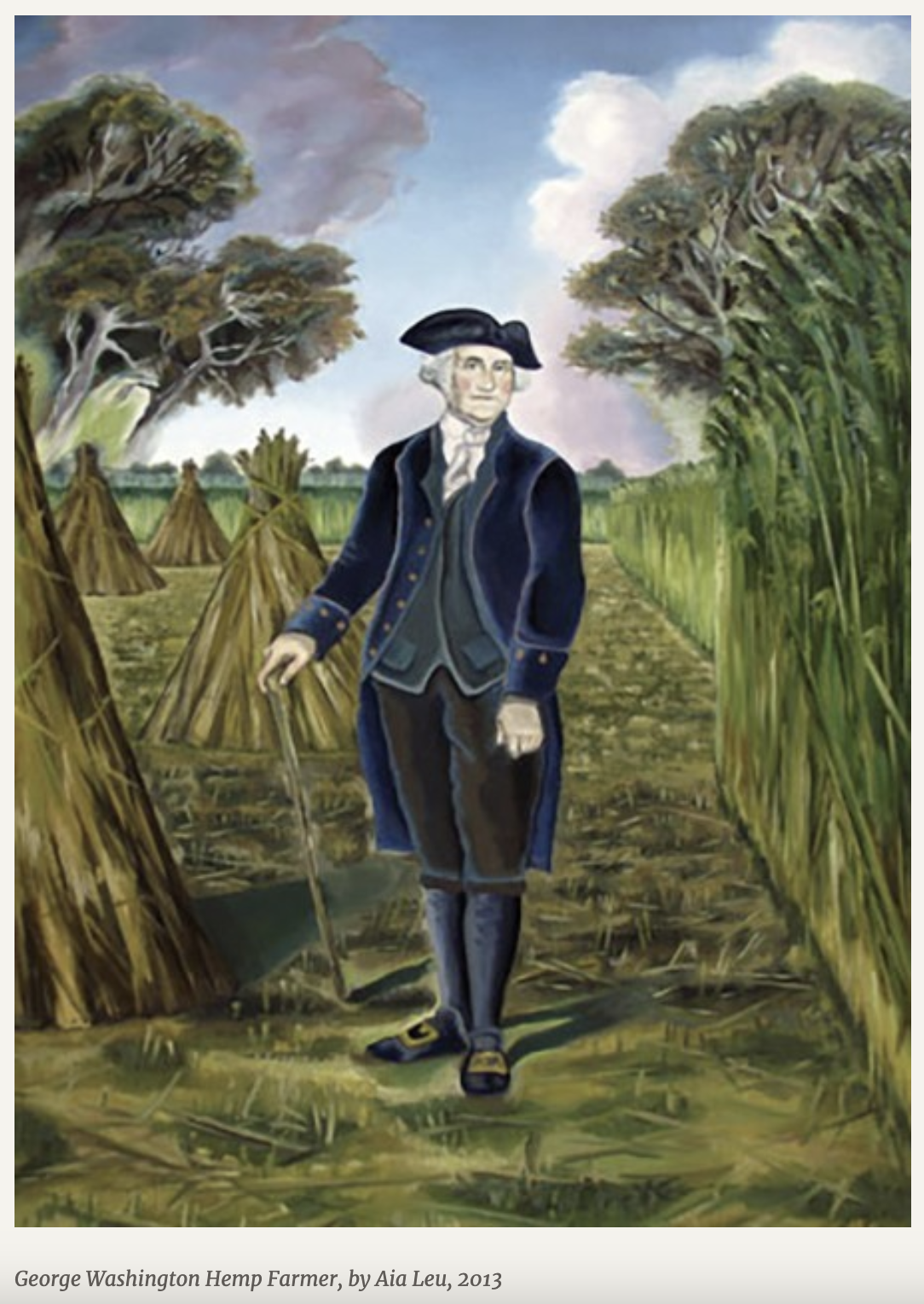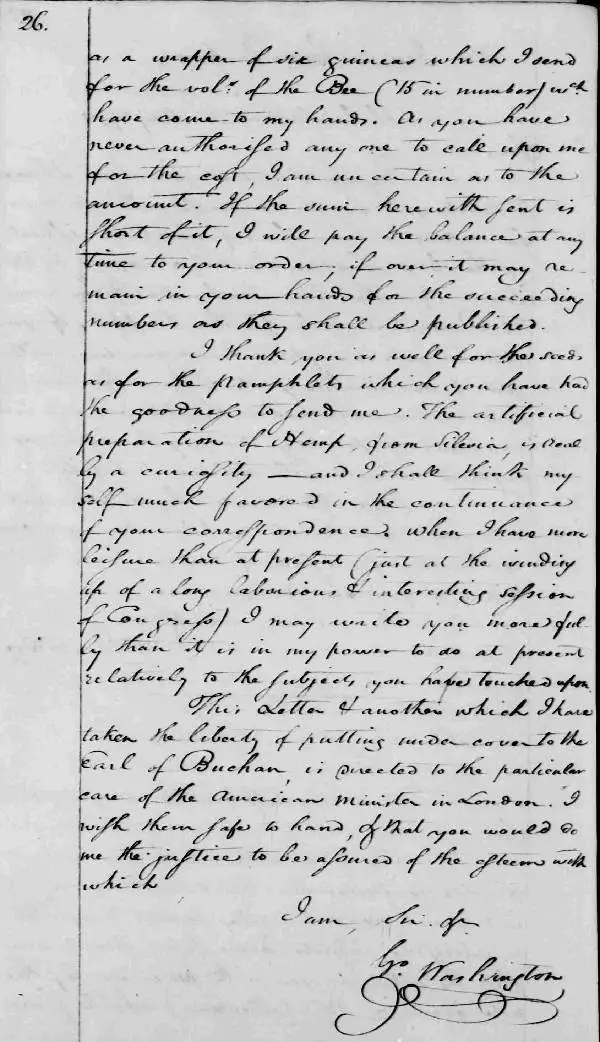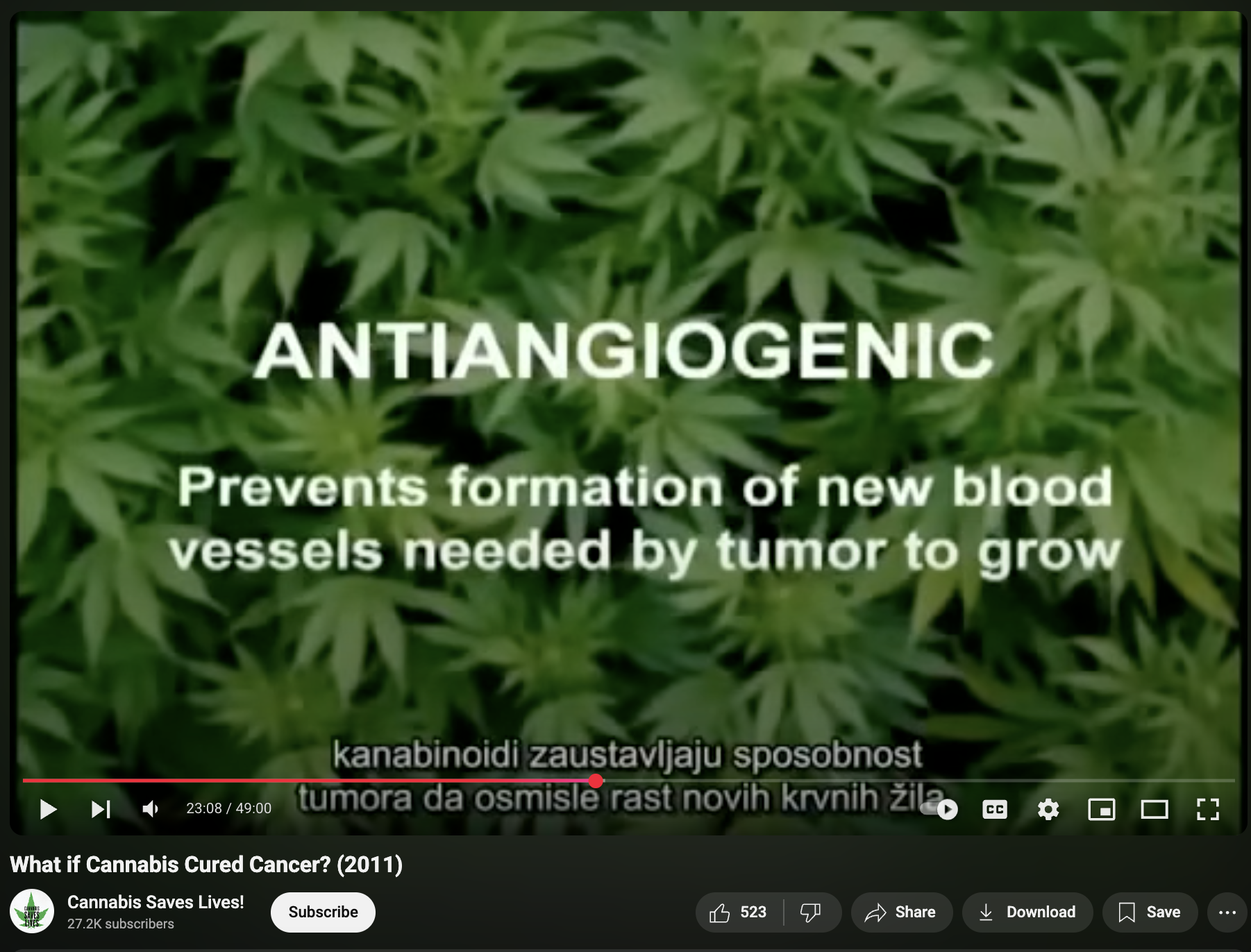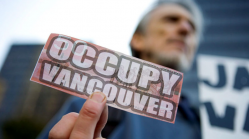The Devil in the Details: Why Russ Belville is Slightly Wrong About His “5 Pot Myths That Must Be Busted”

“I’ve been studying marijuana professionally for eight years now and have read more reports, studies, and data than most of you put together.”
– Russ Belville, Sept. 26 at 10:20am, Facebook
CANNABIS CULTURE – I am saddened when pot activists do sloppy research and hold it out to the public as the truth. I am even more saddened when it takes the form of an attack on other pot activists.
If you’re going to attack your fellow pot activists, make sure you have your own facts straight – or you’re going to look foolish – and be proven wrong by activists who don’t appreciate being talked down to.
Case in point: Russ Belville, who writes for HighTimes.com, wrote a very superficial article called “5 Pro-Pot Myths That Must Be Busted”:
http://www.hightimes.com/read/5-pro-pot-myths-must-be-busted
attacking unnamed activists for promoting five “pot myths”. Except his understanding of each myth was missing some vital truth – a truth that is even more important to understand than the myth he is attempting to “bust”.
1) Washington’s “hemp quotes” – they weren’t just about industrial hemp
Belville’s first myth was about “Debunked Presidential Quotes”. He points out some quotes that are no doubt baseless, such as the Jefferson quote “Some of my finest hours have been spent on my back veranda, smoking hemp and observing as far as my eye can see.” and the Lincoln quote “Two of my favorite things are sitting on my front porch smoking a pipe of sweet hemp, and playing my Hohner harmonica.”
But then Belville goes on to say that “The Founding Father’s hemp quotes, though, are totally legit.”

Image from https://www.mountvernon.org/george-washington/farming/washingtons-crops/george-washington-grew-hemp
Hemp quotes?
Let’s look at these quotes closely. The most famous Founding Father cannabis quotes are from George Washington:
“Began to seperate the Male from the Female hemp at Do.—rather too late.”
- George Washington, Diary, 7 August 1765
https://founders.archives.gov/documents/Washington/01-01-02-0011-0006
As some other cannabis activists have bothered to note:
“…his phrase “rather too late” suggests that he wanted to complete the separation *before the female plants were fertilized*–and this was a practice related to drug potency rather that to fiber culture.”
http://www.erowid.org/plants/cannabis/cannabis_history2.shtml
Then there is the “India hemp” quotes:
“I also gave the Gardener a few Seed of East India hemp to raise from, enquire for the seed which has been saved, and make the most of it at the proper Season for Sowing.”
- George Washington to Howell Lewis or William Pearce, 6 January 1794
https://founders.archives.gov/documents/Washington/05-15-02-0026
“I am very glad to hear that the Gardener has saved so much of the St foin seed, & that of the India Hemp. Make the most you can of both, by sowing them again in drills. Where to sow the first I am a little at a loss (as Hares are very destructive to it) but think, as the Lucern which was sown broad in the Inclosure by the Spring, has come to nothing; as the ground is good; and probably as free from Hares as any other place, it might as well be put there; as I am very desirous of getting into a full stock of seed as soon as possible. Let the ground be well prepared, and the Seed (St foin) be sown in April. The Hemp may be sown any where.”
- George Washington to William Pearce, 24 February 1794
https://founders.archives.gov/documents/Washington/05-15-02-0210
“I cannot with certainty recollect, whether I saw the India hemp growing when I was last at Mount Vernon; but think it was in the Vineyard; somewhere I hope it was sown, and therefore desire that the Seed may be saved in due season & with as little loss as possible: that, if it be valuable, I may make the most of it.”
- George Washington to William Pearce, 17 August 1794
https://founders.archives.gov/documents/Washington/05-16-02-0392
According to all sources, “India hemp” was “grown all over India for intoxification, but never for cordage”,
http://www.kew.org/plant-cultures/plants/hemp_history.html
and that “the principle virtue of this species lay in the strength of its narcotic properties”.
http://wlbcenter.org/Schultes%20Publications/BotMusLeaf_23_337-367.pdf (p. 351)
Wikipedia’s entry on cannabis indica states:
“The high concentrations of THC or THCV provide euphoric effects making it popular for use for several purposes, not only simple pleasure but also clinical drug research, potential new drug research, and use in alternative medicine, among many others.”
https://en.wikipedia.org/wiki/Cannabis_indica
Not only did Washington grow “India hemp” – he also took an interest in “preparations” from it! One only makes “preparations” from the drug cultivar, not the industrial cultivar:
“I thank you as well for the Seeds as for the Pamphlets which you had the goodness to send me. The artificial preparation of Hemp, from Silesia, is really a curiosity; and I shall think myself much favored in the continuance of your correspondence.”
- George Washington letter to James Anderson, 26 May 1794
https://founders.archives.gov/documents/Washington/05-16-02-0107

-Letter from George Washington to James Anderson – May 26, 1794 https://www.thecannachronicles.com/the-founding-growers-part-1-george-washington-1765/
One blog attempted to argue that “India hemp” was actually “jute”.
Another blogger did a bit more digging, and argued against the “sinsemilla” theory but also came up with a couple of bits of evidence to counter the jute argument:
“In another well-known diary entry from August 7, 1765, Washington attempted to separate the male from female hemp plants. Many commentators have suggested that he was trying to produce sinsemilla, seedless marijuana, but this is not the case. It was common to try and produce seedless hemp to promote longer and stronger fibers in the female plants. ‘Began to seperate the Male from the Female hemp at Do.—rather too late.’ Diaries (11 March 1748–13 December 1799), Volume 1 (11 March 1748–13 November 17656
Interestingly though, in the footnote for the diary entry linked above it states: ‘In the 1790s he experimented with a variety from India.’ It appears the official record keepers at the University of Virginia agree with my assessment. George Washington grew an imported variety of India hemp that could only have been a drug type, while he was President in the 1790s. Jute is a tropical fiber crop that is also called India hemp, but jute was not grown at Mount Vernon.”
Maybe Washington wasn’t growing sinsemilla in the 1760s but was growing India hemp (cannabis indica), “in the Vineyard” – along with his wine grapes rather than out in the field. Belville should mention that the “hemp quotes” are probably “marijuana quotes”.
2) Hemp WILL (or COULD, at least) save the world once over-regulation is removed and subsidies are switched
Belville writes:
“Yes, it is an amazingly versatile plant for food, fuel, fiber and medicine. But 31 countries already grow hemp; it’s just the United States banning it that dooms Earth? When there’s a hemp iPhone, hemp diamonds and a hemp cheeseburger that tastes like real thing, maybe hemp will replace everything that damages the environment.”
In a word, “yes” – it’s just the United States banning it that dooms the Earth.
Due to the efforts of the US to create an international drug control regime in the first ten years of the 20th century, and the US ban on hemp in 1937 and the subsequent US effort to ban marijuana all over the world (including the US conception of and efforts to create the Single Convention Treaty on Drugs in 1961), industrial hemp is over-regulated, which prevents it from competing with and replacing the fossil fuels, plastics, tree paper, cotton and the other “25,000 products” they talked about hemp replacing back in 1938.
The reason Canada has “legal hemp” but no real hemp paper or hemp fabric industry to speak of – the reason tree paper and cotton fabric still dominate the market – is not because hemp is inferior to these other materials, but rather hemp is over-regulated … in part because of mis-information from activists like Belville which prevent this over-regulation being identified and then addressed.
It works like this. The drug war provides an excuse to over-regulate. The over-regulation makes hemp artificially expensive, and thus less competitive than other – more inferior – materials:
“A minimum of 10 acres must be grown. (19) The hemp must test below 0.3% in THC. (20) The strain must be “approved”. (21) Hundreds of potentially profitable industrial strains are denied to farmers. (22) The US won’t approve importing Canadian hemp products if they contain even trace amounts of THC (23) Hemp seed must be rendered non-viable and tested for viability. (24) Those with criminal records for cannabis farming are not allowed to grow hemp. (25) Breeders licenses – permitting access to the most economically rewarding element of industrial hemp farming – are difficult to obtain. One needs a science degree and 10 years experience working under an accredited breeder. (26) … Farmers cannot supply themselves with seed – they have to obtain it every year through government approved breeders. Seed is the farmer’s biggest cost, varying between $6,250.00 to $16,875.00 for the average hemp farm (250 acres). For the largest hemp (3000 acres), seed costs can run into the hundreds of thousands of dollars! Canadian hemp farmers spent somewhere between $1,250, 000 to $3,375,000.00 on seeds in 2006 (27) – an unnecessary cost … more than a down-payment on a large hemp fuel manufacturing plant.”
http://hemp-ethanol.blogspot.ca/2008/01/economics-history-and-politics-of-hemp.html
In the discussion below his article, Belville writes “But who’s going to buy new diesel cars for everybody?” Here he exposes his ignorance. The viable hemp fuel is made from the stalk, not the seed. It will be hemp stalk ethanol replacing gasoline – not hemp seed biodiesel replacing regular diesel – that will save the world.
As for “who is going to buy” new cars for everyone, buying entirely new cars isn’t necessary. A gas to ethanol conversion kit – averaging about 500 dollars – is affordable to all who wish to save at least 500 dollars in fuel costs over one year – a wise investment for every motorist.
ZZP LF3/LF4 E85 Flex Fuel Conversion Kit
https://www.bellevuecollege.edu/sustainability/2016/06/13/switching-to-ethanol-is-easier-than-ever/
The way Belville writes, one would believe that hemp “legalization” has already been attempted and has failed. The reality is that over-regulation (such as the over-regulation found in initiatives like Prop 19 that Belville supported) can kill any benefits to society that true legalization promises – a lesson all activists must learn before we settle for the over-regulation of “legal” medicinal and recreational marijuana. Like the over-regulation of industrial hemp, these over-regulations can be difficult to remove once in place and could last for decades or more.
Given hemp ethanol’s ability to end oil wars, oil spills and climate change – not to mention hemps ability to end the clear-cutting of the forests and the massive use of pesticides in the cotton industry – the removal of the over-regulation of industrial hemp is definitely a matter of the survival of the human race. And the removal of the over-regulation of industrial hemp may depend upon whether activists tolerate the over-regulation of medicinal and social cannabis.
That last point can’t be stressed enough.
3. There’s no proof that cannabis cures cancer – but it’s likely the proof will soon be found
Belville writes:
“Yes, we’ve seen THC kill cancer cells in petri dishes and many people swear hemp oil cured their cancer, but cancer is complex and varied. Saying “cannabis cures cancer” is premature, like saying “bread mold cures infection.” Bread mold led to penicillin leading to antibiotics for many infections, as cannabis will lead to various cancer treatments.”
Reading this paragraph, one is left with the impression that it is – and always will be – ridiculous to suggest that cannabis could ever be a cure for cancer – that cannabis will always be in the “treatment” category and will never be in the “cure” category.
In truth, there is a very simple formula for what constitutes a cure for cancer.
a) There must be proof that the cannabis user actually has cancer.
b) There must be proof that cannabis was the only treatment used.
c) There must be proof that the cancer is completely gone and remains gone for at least 5 years.
While it is true that – according to experts such as Dr. Lester Grinspoon and others who have been searching for exactly this kind of proof – there has yet to be solid proof of cannabis curing cancer, there is no reason to suspect that such proof will never be found. In fact, there are three good reasons to suspect this proof will be found relatively soon: the massive number of people now using cannabis as a treatment for cancer, the massive amount of research currently going on in this area, and the new removal of the red tape surrounding research brought about by victories on the recreational cannabis front.
As it turns out, many of the medicinal elements in cannabis are some of the most effective anti-cancer agents known. According to research done by Rob Callaway in a yet-to-be published work, cannabis has been found to be effective in wide range of cancers;
“Multiple animal and preclinical studies, as well as a few case and/or pilot studies strongly suggest that cannabinoids are cancer fighting agents for a wide range of cancers, including breast carcinoma (Cafferal et al., 2010; Cafferal, Sarrió, Palacios, Guzmán, & Sánchez, 2006; De Petrocellis et al., 1998; Ligresti et al., 2006; McAllister, Christian, Horowitz, Garcia, & Desprez, 2007), prostate cancer (Mimeault, Pommery, Wattez, Bailly, & Hénichart, 2003; Ruiz, Miguel, & Diaz-Laviada, 1999; Sarfaraz, Afaq, Adhami, & Muhktar, 2005), pancreatic adenocarcinoma (Carracedo et al., 2006; Michalski et al., 2008), colorectal carcinoma (Patsos et al., 2005), skin carcinoma (Casanova et al., 2003), neuroblastoma (Guzmán, 2003), lung carcinoma (Guzmán, 2003; Preet, Ganju, & Groopman, 2008), uterus carcinoma (Guzmán, 2003), oral cancer (Whyte et al., 2010), cervical carcinoma (Ramer & Hinz, 2008), lymphoma (Gustafsson, Christensson, Sander, & Flygare, 2006; Gustafsson et al., 2008), gliomas (Blázquez et al., 2003; Blázquez et al., 2004; Galve-Roperh et al., 2000; Guzmán et al., 2006; Massi et al., 2004; Sánchez, Galve-Roperh, Canova, Brachet, & Guzmán, 1998), leukemia cells (Jia et al., 2006; Powles et al., 2005), and biliary tract cancers (Leelawat, Leelawat, Narong, & Matangkasombut, 2010). In fact, the evidence overwhelmingly demonstrates that the cannabinoids have anticancer properties, with hundreds of peer-reviewed studies to date demonstrating these effects (see http://www.cannabisscience.com/ for a list of over 800 peer-reviewed cannabis and cancer references).”
Cannabis Myths Exposed, Rob Callaway, M.A., (unpublished)
See also http://www.jci.org/articles/view/37948
http://cannabisnews.com/news/5/thread5972.shtml

Image from https://www.youtube.com/watch?v=Y5t2tejz8XM
Callaway also points out that, due to pressure from elite groups, human studies of cannabis as a treatment for cancer have been kept to a minimum. Non-prohibitionist research associations such as MAPS have been blocked from doing research into the positive effects of cannabis – blocked by the DEA and the NIDA – since MAPS was founded in 1986 right up to the present day:
http://www.maps.org/research/mmj/
http://www.popsci.com/science/article/2013-04/why-its-so-hard-scientists-study-pot
Even highly conservative institutions such as the National Cancer Institute and the Institute of Medicine support further research into cannabis, but the DEA and NIDA succeed in blocking nearly every attempt at such research:
http://articles.latimes.com/2013/jan/25/opinion/la-ed-marijuana-dea-medical-research-20130125
https://maps.org/research-archive/mmj/ricklesh.html
One assumes that the freedom created by the successful legalization initiatives in Washington State and Colorado will create opportunities to do research into the therapeutic and beneficial effects of cannabis.
http://www.sos.wa.gov/_assets/elections/initiatives/i502.pdf
http://www.regulatemarijuana.org/s/regulate-marijuana-alcohol-act-2012
The new “Herer Initiative” that Californians may end up voting for in 2014 specifies:
“Medical research shall be encouraged. … Fifty percent of the excise tax revenues collected shall be made available for the research, development and promotion of industrial, nutritional, and medicinal hemp industries in California.”
http://www.cchi2014.org/fulltext.html
It is only a matter of time before this initiative – or one similar to it – passes a Statewide initiative process and the opportunities to investigate cannabis as a cure for cancer multiply exponentially.
Many people already claim to have been cured by cannabis of their cancer.
http://www.cureyourowncancer.org/testimonials.html
http://www.trueactivist.com/there-is-no-mistaking-the-evidence-cannabis-cures-cancer
http://patients4medicalmarijuana.wordpress.com/2013/04/21/24-yr-old-rejects-chemo-curing-brain-cancer-with-cannabis-oil
http://www.chrisbeatcancer.com/lindsey-cures-colon-cancer-with-cannabis-in-48-days
http://norml-uk.org/2012/08/cannabis-can-cure-cancer
https://www.greenpassion.org/index.php?/forum/68-hemp-oil-stories-and-testimonials
http://www.420magazine.com/forums/cancer-healing/140579-cannabis-oil-cured-my-cancer.html
It’s only a matter of time before these testimonials are collected and put through the systematic methodology of scientific scrutiny and meet the criteria for being a “cure” set out by science.
4. Prisons will not replace pot criminals with other “real criminals” – there’s just not that many “real criminals” out there.
Belville writes:
“This stat calculates the cost of cops, courts and jails, and then figures if pot arrests are part of those costs, we’d save that much money. Except that bureaucracies don’t return unspent budgets, they spend them. Cops, courts and jails will still get that money; they’ll just spend it on real criminals.”
According to drugwarfacts.org,
Total federal and state marijuana prisoners in 2004 = 44,816
Note: These data only address people in prisons and thus exclude the 700,000+ offenders who may be in local jails because of a marijuana conviction.
– See more at: http://www.drugwarfacts.org/cms/Prisons_and_Drugs#sthash.AUzcP5UG.dpuf
750,000 is a lot of prisoners in prisons and jails – who does Belville think will be selected to replace all these prisoners? There are currently no likely candidates that could possibly supply high enough numbers.
Furthermore, an end to the war on pot could also eventually spell an end to the entire drug war. According to drugwarfacts.org:
“Federal: On Dec. 31, 2011, there were 197,050 sentenced prisoners under federal jurisdiction. Of these, 94,600 were serving time for drug offenses,”
See more at:http://www.drugwarfacts.org/cms/Prisons_and_Drugs#sthash.AUzcP5UG.dpuf
“State: On Dec. 31, 2011, there were 1,341,804 sentenced prisoners under state jurisdiction. Of these, 225,242 were serving time for drug offenses,”
See more at:http://www.drugwarfacts.org/cms/Prisons_and_Drugs#sthash.AUzcP5UG.dpuf
That’s just those in prisons. The number in jails is no doubt more than that.
The latest data has the USA jailing 716 per 100,000 citizens.
http://prisonstudies.org/info/worldbrief/wpb_country.php?country=190
For the Netherlands – a country that can provide a clue as to what a “post pot war” USA might look like – that number is 82 per 100,000 citizens.
http://prisonstudies.org/info/worldbrief/wpb_country.php?country=157
An end to the war on pot – and/or the drug war – would also no doubt reduce policing costs. Arrests would also no doubt decrease without any possibility of a “replacement scapegoat” that could provide similar numbers being found.
According to the latest information, in the United States between 1985 and 2010 “31 million people have been arrested on drug related charges.”
Alexander, Michelle (2010). The New Jim Crow: Mass Incarceration in the Age of Colorblindness. New York: The New Press. p. 60.
What group of potential replacement criminals has this many members and is likely to be criminalized in the near future? Belville offers no examples.
The California Legislative Analyst’s Office has provided analysis for the 2014 Herer Initiative’s impact were it to be put into effect. They write:
“Reduction in Various Criminal Justice Costs. The measure would result in reduced costs to the state and local governments by reducing the number of marijuana offenders incarcerated in state prisons and county jails, as well as the number placed under community supervision (such as county probation). In addition, the measure would result in a reduction in state and local costs for the enforcement of marijuana-related offenses and the handling of related criminal cases in the state court system. In total, these reduced costs could be in the low hundreds of millions of dollars annually.”
http://www.lao.ca.gov/ballot/2013/130481.aspx
And that’s just for California. California only has 38 million people in it – roughly 12% of the 316 million people living in the United States. If California can save “hundreds of millions” in enforcement and court costs – and the real experts on the subject who’s job it is to know the answer to that question say that it can – the entire USA can save billions. And that’s just for pot. Add more billions for the rest of the drug war – including the violence that stems from the black market in drugs – and we’re into the 10s of billions. And then add on the savings to the healthcare system and the no-longer-missing tax revenue and we’re into the dozens of billions. These are just the facts, and they should not be understated.
5. Marijuana isn’t harmless – unless used properly
Belville writes:
“Nothing ingested is harmless; you can die from drinking too much water or eating ten raw potatoes. Some experience a cyclical vomiting syndrome from long-term cannabis use. Pot not advised for people with some mental illnesses, and if you’re smoking it, while it’s not tobacco, you’re still smoking, which is not healthy.”
What Belville fails to mention is that most activists – or at least most of the ones I work with – qualify their “cannabis is harmless” statements with caveats such as “relatively” and “when used properly” and the evidence supports such statements, when qualified in such a way, as to be accurate.
According to many medical marijuana dispensaries such as this one in Montreal;
“People experiencing heightened anxiety, or those with mental health conditions should use caution with Sativa-dominant varieties.”
http://www.clubcompassion.org/cannabis_eng_ccm.htm
Furthermore, a study done by California NORML back in 1995 indicates that smoking stronger marijuana – or by that rationale hashish – reduces the “tar per dose” ratio and may end up being an effective harm reduction technique. There is no information on smoking small amounts of concentrates through multiple-chamber glass bongs to eliminate heat using hemp wax as a mode of ignition, but there should be, given that this is an ideal way of reducing the negative factors of smoking down to zero. And given the fact that the worst case scenario from smoking cannabis is bronchitis, while the benefits to smoking (not least of which being ease of self-titration) are many, the concept of the “unhealthiness” of smoking cannabis properly is due for a revision any day now.
I collected the evidence for the efficacy of cannabis harm reduction techniques in my Supreme Court constitutional challenge:
http://forums.cannabisculture.com/forums/ubbthreads.php?ubb=showflat&Number=712300&page=3
The Supreme Court of Canada agreed with the “proper use is harmless” argument in paragraph 100 of their decision in R. V. Malmo-Levine, when they wrote:
“We accept his point that careful use can mitigate the harmful effects …”
http://scc.lexum.org/decisia-scc-csc/scc-csc/scc-csc/en/item/2109/index.do
In the follow up comment section, Belville writes “Kids shouldn’t smoke it.” What about kids with stress and/or depression and/or anorexia and/or other medical conditions for which cannabis is the ideal medicine? From a recent article I wrote for celebritystoner.com regarding Justin Trudeau’s similar “assassin of youth” reefer madness:
“With the reference to keeping cannabis ‘out of the hands of young people’ because cannabis is ‘not great for you’ because it ‘disconnects you a little bit from the world,’ Trudeau is propagating the myth – even popular among some of today’s most prominent pot activists – that cannabis is inherently harmful to young people, despite the fact there are apparently no studies a) that have found a direct causal relationship between negative effects, such as the dropping of I.Q. or increases in psychosis among teens who use cannabis, b) that have found increases in psychosis and drops in I.Q. that mirror the 10-fold increase in the use of cannabis in all age groups between 1950 and today, or c) on the comparative harm to teens of cannabis misuse and typical cannabis prohibition-related harms such as 1) perils of the black market association with criminals, wrongful arrests, injury from arrest and contaminated and/or adulterated cannabis, and 2) punishments such as financial hardships, loss of job or educational opportunities, a criminal record or sometimes even jail.
If anyone’s in possession of such studies, please let me know at [email protected].”
http://www.celebstoner.com/blogs/david-malmo-levine/2013/07/26/the-greening-of-justin-trudeau/
I still haven’t had any responses to the above challenge.
Belville may have surrounded himself with people who claim cannabis is “harmless” – but if he bothers to look beyond his own circle of friends, he will find many pot activists with far more nuanced arguments. Most pot activists are now making distinctions between use and abuse.
In the future, if Belville is going to give advice to the entire pot community about how to make successful arguments, perhaps he should provide examples of the offenders in question, so that the rest of us can know if it’s prominent activists he’s talking about or just the most ignorant and marginalized from amongst our ranks that are unrepresentative of cannabis activists as a whole.



